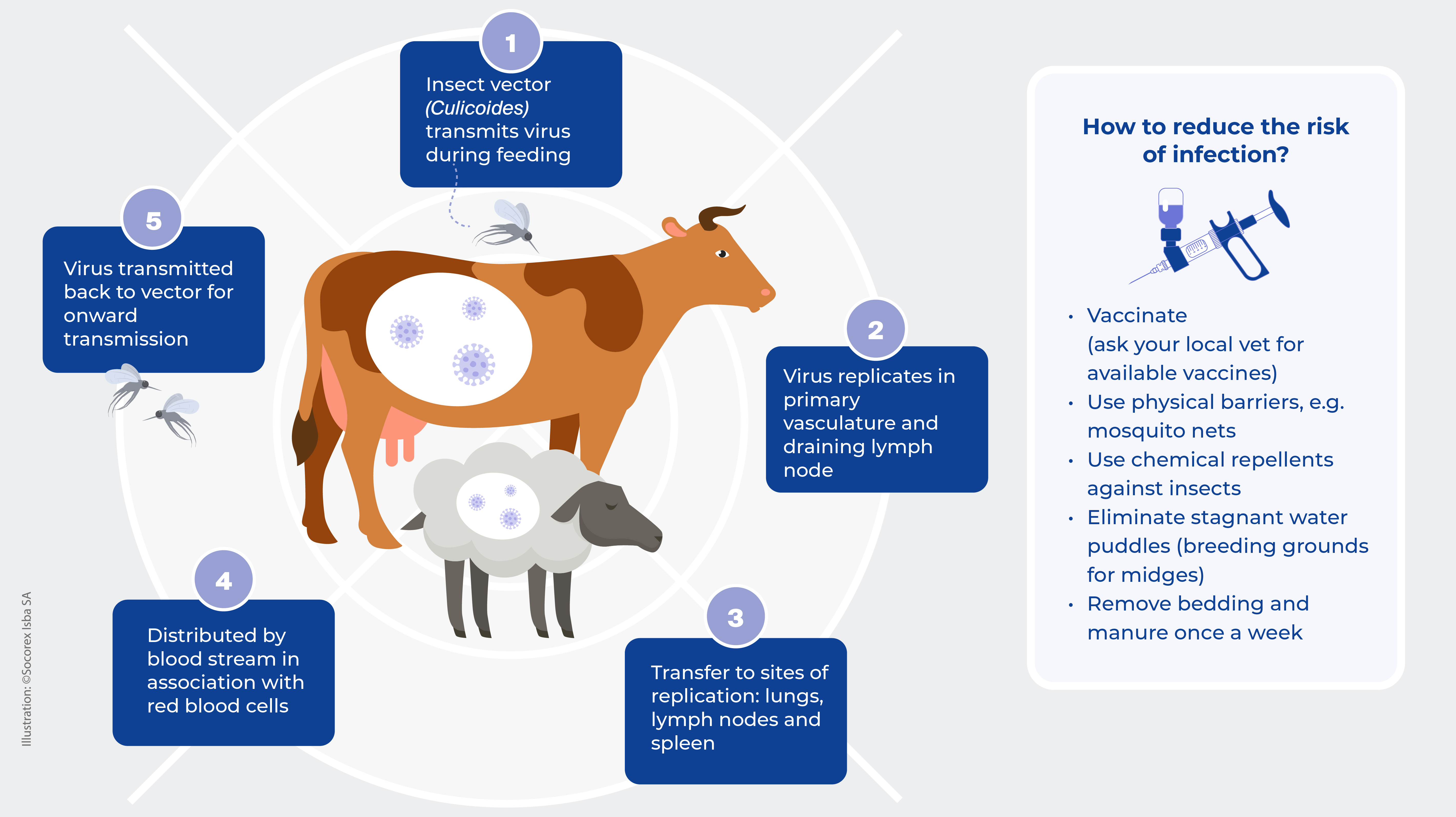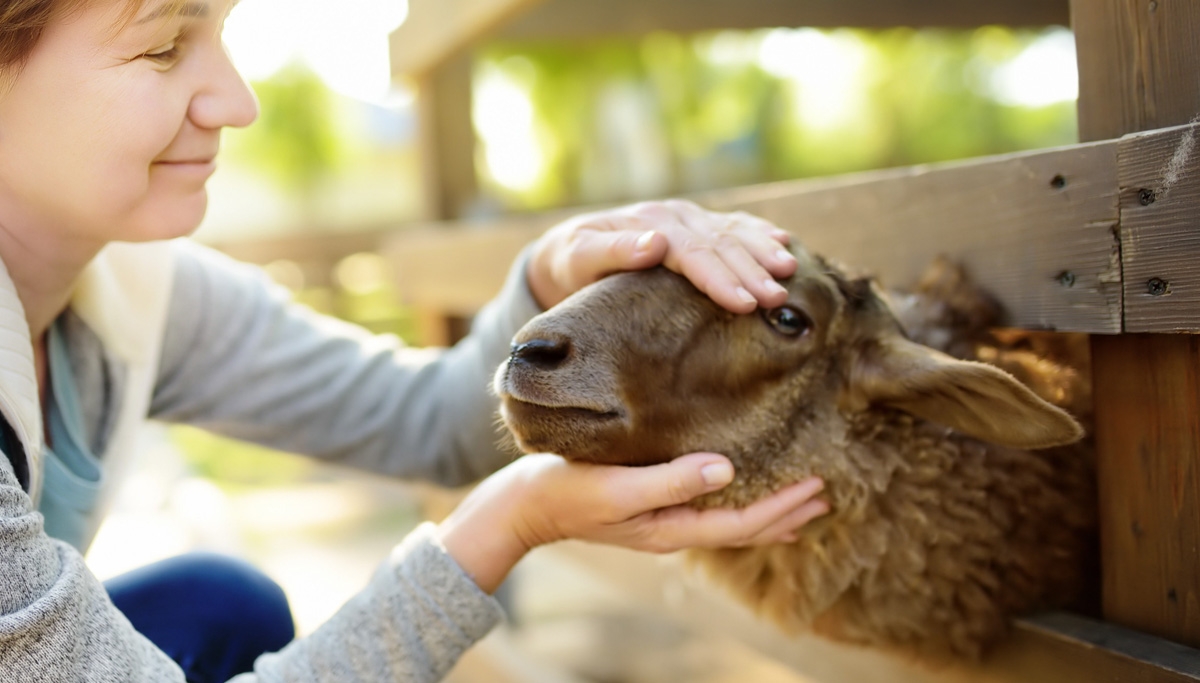In September 2023, a new variant of Bluetongue Disease, BTV-3, emerged in the Netherlands and has since spread across Northern Europe, posing a serious threat to livestock. Additionally, outbreaks of BTV-8 are becoming more prevalent, significantly affecting sheep and cattle populations. While there is no risk to public health—the disease is not transmitted through contact with animals, wool, or milk—it's essential for livestock owners to stay informed.
What is Bluetongue Disease (BT) and what causes it?
Bluetongue Disease (BT) affects domestic and wild ruminants, including sheep, cattle, goats, deer, and elk. The disease was first described in sheep in South Africa in the 18th century and is primarily transmitted by insects from the Culicoides (midges) family. Less common transmission routes include semen from infected bulls and rams to susceptible cows, or through the placenta to foetuses. To date, over 25 different BTV serotypes have been identified, each causing varying degrees of severity.

What are the symptoms?
The severity of BT varies by BTV serotype. Sheep are the most severely affected, with mortality rates reaching up to 70% for infections with the BTV-8 variant. While cattle may experience higher infection rates than sheep, they often show little to no clinical signs and can carry the virus for weeks, acting as hosts for the insect vectors.
Symptoms, as specified by the World Organisation for Animal Health (WOAH), include:
- Fever
- Haemorrhages and ulcers on oral and nasal tissues
- Excessive salivation, nasal discharge, and swelling of lips, tongue, and jaw
- Inflammation above the hoof (coronary band), leading to lameness
- Weakness, depression, weight loss
- Diarrhea, vomiting, pneumonia
- Rarely, a ‘blue’ tongue due to cyanosis
- Pregnant ewes may abort
- Sheep recovering from the disease may experience a break in wool growth, leading to partial or complete wool loss.
Current global incidence
Since September 2023, nearly every European country has reported cases of BTV-3 or faces a high risk of the disease. Additionally, a BTV-8 strain has been spreading since August 2024, causing substantial impact on sheep and cattle. The economic impact of BT extends beyond animal health, affecting international trade and farmers' livelihoods.
Reporting and responding to outbreaks
BT outbreaks must be reported to the World Organisation for Animal Health (WOAH). If you suspect an outbreak, promptly contact your local veterinary services to test and confirm the disease and plan appropriate action to prevent spreading. Rapid diagnostics using RT-PCR tests as well as serological tests can provide precise information on virus type and serotype.
Prevention and control of BTV
Vaccination is the most effective preventive measure against BTV. Vaccines for subcutaneous administration are available for a variety of BTV serotypes, and it's crucial to use the vaccine specific to the serotype in your region. One year after the emergence of BTV-3, some EU countries (Germany, Netherlands, Belgium, and France) have approved inactivated vaccines for emergency use in sheep and cattle.
Preventive actions:
- Vaccinate your livestock: Regularly check which vaccines are authorized and recommended in your area.
- Early detection: Monitor animals for symptoms.
- Timely reporting: Report any suspected cases to veterinary authorities to enable swift action.
Timely vaccination is essential. By being proactive with vaccination and disease monitoring, you can help prevent the spread of BTV and protect your animals from this serious health threat.
Further reading
- WOAH Terrestrial Manual 2021, Chapter 3.1.3. Bluetongue (infection with bluetongue virus), accessed on 08.10.2024 and available athttps://www.woah.org/en/disease/bluetongue/
- https://www.science.org/content/article/livestock-virus-hits-europe-vengeance
- https://assets.publishing.service.gov.uk/media/66e151e0865c0eef0bc42dfd/Updated_Outbreak_Assessment__11_Bluetongue_
Virus_in_Europe.pdf - https://www.gov.uk/government/collections/bluetongue-information-and-guidance-for-livestock-keepers
- https://www.blv.admin.ch/blv/fr/home/tiere/tierseuchen/uebersicht-seuchen/alle-tierseuchen/bt.html#2026764101


